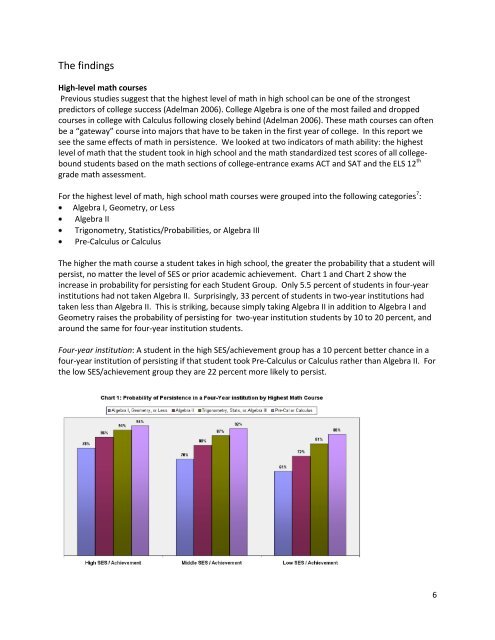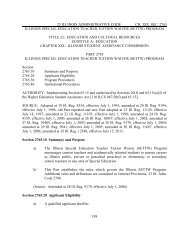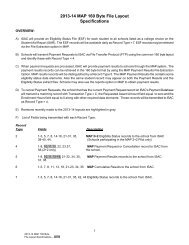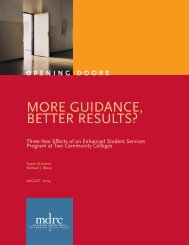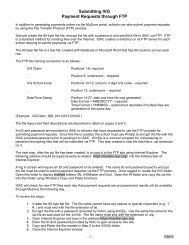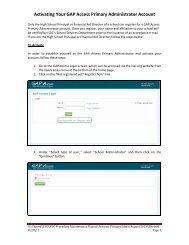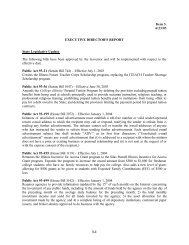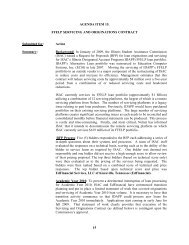High school rigor and good advice: Setting up students to succeed
High school rigor and good advice: Setting up students to succeed
High school rigor and good advice: Setting up students to succeed
You also want an ePaper? Increase the reach of your titles
YUMPU automatically turns print PDFs into web optimized ePapers that Google loves.
The findings<br />
<strong>High</strong>-level math courses<br />
Previous studies suggest that the highest level of math in high <strong>school</strong> can be one of the strongest<br />
predic<strong>to</strong>rs of college success (Adelman 2006). College Algebra is one of the most failed <strong>and</strong> dropped<br />
courses in college with Calculus following closely behind (Adelman 2006). These math courses can often<br />
be a “gateway” course in<strong>to</strong> majors that have <strong>to</strong> be taken in the first year of college. In this report we<br />
see the same effects of math in persistence. We looked at two indica<strong>to</strong>rs of math ability: the highest<br />
level of math that the student <strong>to</strong>ok in high <strong>school</strong> <strong>and</strong> the math st<strong>and</strong>ardized test scores of all collegebound<br />
<strong>students</strong> based on the math sections of college-entrance exams ACT <strong>and</strong> SAT <strong>and</strong> the ELS 12 th<br />
grade math assessment.<br />
For the highest level of math, high <strong>school</strong> math courses were gro<strong>up</strong>ed in<strong>to</strong> the following categories 7 :<br />
Algebra I, Geometry, or Less<br />
Algebra II<br />
Trigonometry, Statistics/Probabilities, or Algebra III<br />
Pre-Calculus or Calculus<br />
The higher the math course a student takes in high <strong>school</strong>, the greater the probability that a student will<br />
persist, no matter the level of SES or prior academic achievement. Chart 1 <strong>and</strong> Chart 2 show the<br />
increase in probability for persisting for each Student Gro<strong>up</strong>. Only 5.5 percent of <strong>students</strong> in four-year<br />
institutions had not taken Algebra II. Surprisingly, 33 percent of <strong>students</strong> in two-year institutions had<br />
taken less than Algebra II. This is striking, because simply taking Algebra II in addition <strong>to</strong> Algebra I <strong>and</strong><br />
Geometry raises the probability of persisting for two-year institution <strong>students</strong> by 10 <strong>to</strong> 20 percent, <strong>and</strong><br />
around the same for four-year institution <strong>students</strong>.<br />
Four-year institution: A student in the high SES/achievement gro<strong>up</strong> has a 10 percent better chance in a<br />
four-year institution of persisting if that student <strong>to</strong>ok Pre-Calculus or Calculus rather than Algebra II. For<br />
the low SES/achievement gro<strong>up</strong> they are 22 percent more likely <strong>to</strong> persist.<br />
6


